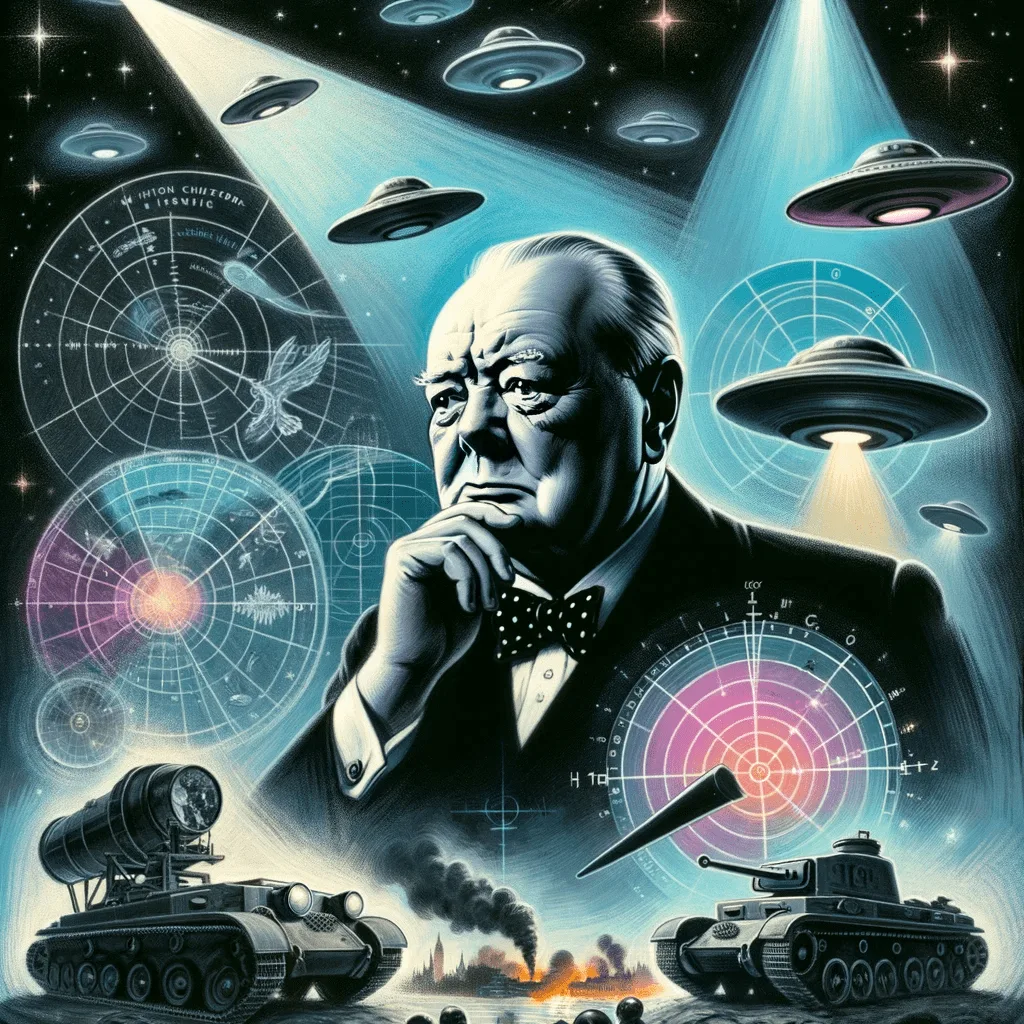Winston Churchill Memo

Winston Churchill’s inquiry into “flying saucers” marked one of the most intriguing moments in his tenure as Prime Minister. His memo, dated July 28, 1952, was directed to his Secretary of State for Air, Lord Cherwell. This message echoed the heightened global curiosity and burgeoning public anxiety surrounding unidentified flying objects (UFOs), more commonly known as “flying saucers.”
During the early 1950s, public sightings of these mysterious objects skyrocketed, culminating in a significant event in Washington, D.C., in July 1952. Over two weekends, radar screens in the U.S. capital picked up a series of unidentified objects. These incidents sparked widespread media attention and public fascination, contributing to an atmosphere of apprehension and mystery surrounding the UFO phenomenon. Churchill’s memo essentially asked for a thorough investigation into the matter, reflecting his deep interest in scientific inquiry and his duty as the Prime Minister to address matters of national security.
The memo contained a straightforward yet significant query: “What does all this stuff about flying saucers amount to? What can it mean? What is the truth?”
The perception of these unidentified objects shifted with advances in radar technology, atmospheric physics, and astronomy.
- As reported by “BBC History Magazine,” Churchill’s enquiry led to a detailed report known as “The Flying Saucer Working Party.” The report largely dismissed the existence of extraterrestrial vehicles but conceded that some sightings remained unexplained.
- According to Richard Dolan in his book “UFOs and the National Security State: Chronology of a Coverup 1941-1973,” Churchill’s enquiry was in part prompted by a personal account of a UFO sighting by one of his own pilots during the Second World War.
- As noted in The National Archives (UK), the official investigation into UFO sightings in the UK began in 1950, two years before Churchill’s memo, and continued until 2009.
Dr. David Clarke, a leading UFO historian and author of “The UFO Files: The Inside Story of Real-life Sightings,” argue that Churchill’s memo was a significant moment. It demonstrated his willingness to engage with novel phenomena and address public concerns while showing a characteristic open-mindedness to new scientific paradigms.
In response to Churchill’s query in his July 28, 1952 memo, the RAF’s “Flying Saucer Working Party” prepared a detailed report on the UFO phenomenon. The findings, largely based on the available scientific understanding and empirical evidence of the time, sought to provide answers to Churchill’s questions.
What does all this stuff about flying saucers amount to?
The report concluded that the vast majority of “flying saucer” sightings could be attributed to one of three factors: misinterpretations of known objects or phenomena, optical illusions, or hoaxes. Misinterpretations often involved ordinary objects like aircraft, balloons, birds, or celestial bodies like stars and meteors. The sightings were, for the most part, not considered to be of any defense significance.
What can it mean?
It concluded most were attributable to ordinary or explainable phenomena. It did not find evidence to suggest extraterrestrial origin or advanced foreign technology.
What is the truth?
The truth, according to the report, was that there was no substantial evidence to support the existence of extraterrestrial vehicles or threats to national security. However, the report also acknowledged that some sightings remained unexplained, indicating that while there was no definitive proof of extraterrestrial life or advanced technologies, there were still phenomena that the current understanding of science couldn’t explain.
Churchill’s memo on “flying saucers” is a fascinating historical document that speaks to the zeitgeist of the early 1950s.

